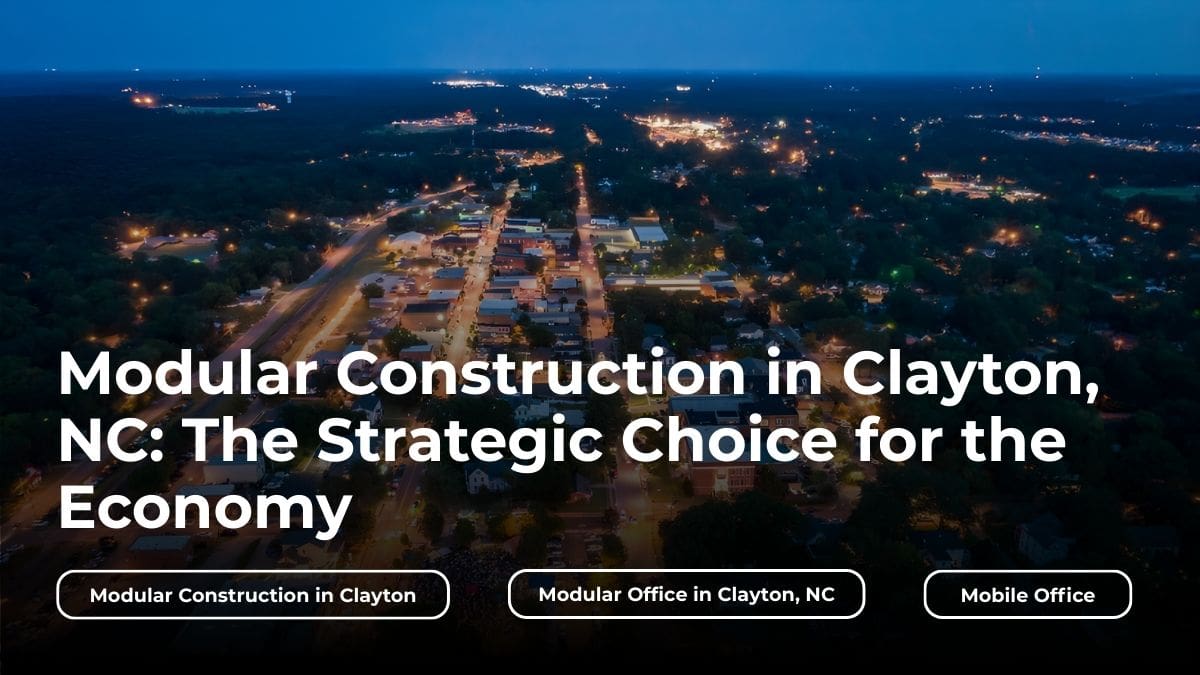Oh, the autumn season. Here come the ghouls, ghosts, zombies, monsters, and witches. Halloween is meant to be scary, so we’re bringing you some wildly interesting modular building feats and that just might keep you on your toes… and peeking around the next corner…
Take, for example, Zhang Yue, the infamous founder and chairman of Broad Sustainable Building based in China’s Hunan Province; and the 30-story building he built in FIFTEEEN days. In a classic interview with Zhang covered by Wired Magazine: “Traditional construction is chaotic,” he says. “We took construction and moved it into the factory.” According to Zhang, his buildings will help solve the many problems of the construction industry. They will be safer, quicker, and cheaper to build. And they will have low energy consumption and CO2 emissions. When Wired asked Zhang why he decided to start a construction company, he responds “It’s not a construction company,” he says. “It’s a structural revolution.” (Watch the time lapse here.)
Of course, many assume that modular building is a fairly new invention, perhaps something that came into being during the 20th century. Let modular.org enlighten us:
The origins of modular buildings date back to the 1600s. One of the first reported modular homes was brought to life by a colonial American fisherman who had recently moved from England and wanted a home built with trusted English construction methods. The solution to this was to have a disassembled home shipped by boat across the Atlantic Ocean.
In the 1800s, as the United States expanded westward, modular construction began to make a more prominent appearance. During the California Gold Rush, mining towns boomed, and as they flourished, a quick housing solution was needed. More than 500 preassembled homes were built in factories in New York and then shipped across the country to California.
But it wasn’t until the end of the 19th century that the demand for modular homes started trending upwards. In 1897, E.F. Hodgson opened a manufacturing plant in Dover, Massachusetts which profited from the rapidly growing American population. The E.F Hodgson Company developed a catalog from which they sold modular homes across the country. Sears, Roebuck and Montgomery Ward soon followed in their footsteps and http://www.searsarchives.com/homes/history.htm of modular homes over the next few decades. (Read full article on modular.org.)
Now what about indigenous cultures that sought suitable housing for their lifestyle and climate? Could we consider these modular? You be the judge:
For nomadic tribes that followed the buffalo, it was imperative that their entire village was able to pick up very quickly and move along to another location (sounds a bit like workforce housing, no?) These relocatable quarters, or teepees, were built using many long wooden poles for the frame, then tied together snug at the top and spread out wide at the ground, making an upside-down cone shape. After this frame was tested for sturdiness, a giant covering made from buffalo hides was placed over the structure. This process took around 30 minutes, making it an extremely efficient way to live.
As tribes migrated, each family in the village would carry along their own poles and hides, erecting teepees around 12-feet tall. After horses came into the picture, they started building them twice as tall. Modular buildings, delivered by horse!
What do you think? Could it be our counties’ original portable buildings were invented on America’s Great Plains?
The modular construction team at Aries has slain the many-headed hydra that is modular construction and turned the process into a tame, effective operation; but there are still many aspects of the business that are frighteningly impressive.
One is the insane adaptability of the modular buildings. Whether its mobile offices, storage containers, modular educational facilities, or workforce housing, every client is accompanied by a specialist whose job is to design the building’s specs that exactly match the client´s needs.
For example, as the COVID-19 pandemic swept through the country, many schools began requesting that their modular classrooms come designed for disease prevention. A team of seasoned experts sat down with our school clients to design choices and buildings solutions that would allow them to get their academic processes back on track. Soon after, from the Aries´s owned factory, brand new units with automatic doors, non-contact infrared thermometers, and wall-mounted hand sanitizer stations began rolling out. How terrifyingly efficient!
But customization is not the only “freaky,” scary thing about modular construction. For years, modular buildings have solved challenges, offered innovation to the building industry, and downright fascinated us with visual flair and new ways to look at construction. From modular skyscrapers, to ultra-modern architectural design and specialized medical units, the modular construction industry has applied its time-tested process in diverse fields.
The “scariest” aspect of all is just how fast the process can go from first contact to final delivery. Everything from hooking up power and energy to permit acquisition can be done at a blistering rate, sure to scare the socks off the competition.
So, this Halloween come be scared in all the right ways with a new modular building or modular office, designed and delivered for you!
ABOUT ARIES ꟷ At Aries, we believe there’s nothing more important than consistent delivery of exceptional service, dependability, and innovation. Aries promotes our philosophy of achieving together by learning from our clients, ensuring the development of mutually rewarding results and outcomes. All under Aries’ roof, we offer: design/build engineering, in-house manufacturing, an in-house transportation arm, construction services and general construction, civil work, land development, and capital/finance leasing.
Become a customer today! Visit Aries: www.ariesbuildings.com or call (U.S.) 1-888-598-8869. You can also contact us via our website.
Oh, the autumn season. Here come the ghouls, ghosts, zombies, monsters, and witches. Halloween is meant to be scary, so we’re bringing you some wildly interesting modular building feats and that just might keep you on your toes… and peeking around the next corner…
Take, for example, Zhang Yue, the infamous founder and chairman of Broad Sustainable Building based in China’s Hunan Province; and the 30-story building he built in FIFTEEEN days. In a classic interview with Zhang covered by Wired Magazine: “Traditional construction is chaotic,” he says. “We took construction and moved it into the factory.” According to Zhang, his buildings will help solve the many problems of the construction industry. They will be safer, quicker, and cheaper to build. And they will have low energy consumption and CO2 emissions. When Wired asked Zhang why he decided to start a construction company, he responds “It’s not a construction company,” he says. “It’s a structural revolution.” (Watch the time lapse here.)
Of course, many assume that modular building is a fairly new invention, perhaps something that came into being during the 20th century. Let modular.org enlighten us:
The origins of modular buildings date back to the 1600s. One of the first reported modular homes was brought to life by a colonial American fisherman who had recently moved from England and wanted a home built with trusted English construction methods. The solution to this was to have a disassembled home shipped by boat across the Atlantic Ocean.
In the 1800s, as the United States expanded westward, modular construction began to make a more prominent appearance. During the California Gold Rush, mining towns boomed, and as they flourished, a quick housing solution was needed. More than 500 preassembled homes were built in factories in New York and then shipped across the country to California.
But it wasn’t until the end of the 19th century that the demand for modular homes started trending upwards. In 1897, E.F. Hodgson opened a manufacturing plant in Dover, Massachusetts which profited from the rapidly growing American population. The E.F Hodgson Company developed a catalog from which they sold modular homes across the country. Sears, Roebuck and Montgomery Ward soon followed in their footsteps and http://www.searsarchives.com/homes/history.htm of modular homes over the next few decades. (Read full article on modular.org.)
Now what about indigenous cultures that sought suitable housing for their lifestyle and climate? Could we consider these modular? You be the judge:
For nomadic tribes that followed the buffalo, it was imperative that their entire village was able to pick up very quickly and move along to another location (sounds a bit like workforce housing, no?) These relocatable quarters, or teepees, were built using many long wooden poles for the frame, then tied together snug at the top and spread out wide at the ground, making an upside-down cone shape. After this frame was tested for sturdiness, a giant covering made from buffalo hides was placed over the structure. This process took around 30 minutes, making it an extremely efficient way to live.
As tribes migrated, each family in the village would carry along their own poles and hides, erecting teepees around 12-feet tall. After horses came into the picture, they started building them twice as tall. Modular buildings, delivered by horse!
What do you think? Could it be our counties’ original portable buildings were invented on America’s Great Plains?
The modular construction team at Aries has slain the many-headed hydra that is modular construction and turned the process into a tame, effective operation; but there are still many aspects of the business that are frighteningly impressive.
One is the insane adaptability of the modular buildings. Whether its mobile offices, storage containers, modular educational facilities, or workforce housing, every client is accompanied by a specialist whose job is to design the building’s specs that exactly match the client´s needs.
For example, as the COVID-19 pandemic swept through the country, many schools began requesting that their modular classrooms come designed for disease prevention. A team of seasoned experts sat down with our school clients to design choices and buildings solutions that would allow them to get their academic processes back on track. Soon after, from the Aries´s owned factory, brand new units with automatic doors, non-contact infrared thermometers, and wall-mounted hand sanitizer stations began rolling out. How terrifyingly efficient!
But customization is not the only “freaky,” scary thing about modular construction. For years, modular buildings have solved challenges, offered innovation to the building industry, and downright fascinated us with visual flair and new ways to look at construction. From modular skyscrapers, to ultra-modern architectural design and specialized medical units, the modular construction industry has applied its time-tested process in diverse fields.
The “scariest” aspect of all is just how fast the process can go from first contact to final delivery. Everything from hooking up power and energy to permit acquisition can be done at a blistering rate, sure to scare the socks off the competition.
So, this Halloween come be scared in all the right ways with a new modular building or modular office, designed and delivered for you!
ABOUT ARIES ꟷ At Aries, we believe there’s nothing more important than consistent delivery of exceptional service, dependability, and innovation. Aries promotes our philosophy of achieving together by learning from our clients, ensuring the development of mutually rewarding results and outcomes. All under Aries’ roof, we offer: design/build engineering, in-house manufacturing, an in-house transportation arm, construction services and general construction, civil work, land development, and capital/finance leasing.
Become a customer today! Visit Aries: www.ariesbuildings.com or call (U.S.) 1-888-598-8869. You can also contact us via our website.
Follow Us On Social Media!










